Effect of population heterogenization on the reproducibility of mouse behavior: a multi-laboratory study
- PMID: 21305027
- PMCID: PMC3031565
- DOI: 10.1371/journal.pone.0016461
Effect of population heterogenization on the reproducibility of mouse behavior: a multi-laboratory study
Abstract
In animal experiments, animals, husbandry and test procedures are traditionally standardized to maximize test sensitivity and minimize animal use, assuming that this will also guarantee reproducibility. However, by reducing within-experiment variation, standardization may limit inference to the specific experimental conditions. Indeed, we have recently shown in mice that standardization may generate spurious results in behavioral tests, accounting for poor reproducibility, and that this can be avoided by population heterogenization through systematic variation of experimental conditions. Here, we examined whether a simple form of heterogenization effectively improves reproducibility of test results in a multi-laboratory situation. Each of six laboratories independently ordered 64 female mice of two inbred strains (C57BL/6NCrl, DBA/2NCrl) and examined them for strain differences in five commonly used behavioral tests under two different experimental designs. In the standardized design, experimental conditions were standardized as much as possible in each laboratory, while they were systematically varied with respect to the animals' test age and cage enrichment in the heterogenized design. Although heterogenization tended to improve reproducibility by increasing within-experiment variation relative to between-experiment variation, the effect was too weak to account for the large variation between laboratories. However, our findings confirm the potential of systematic heterogenization for improving reproducibility of animal experiments and highlight the need for effective and practicable heterogenization strategies.
Conflict of interest statement
Figures


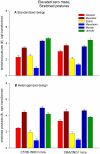
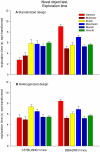

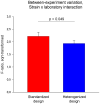
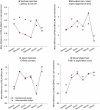
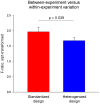
Similar articles
-
Systematic heterogenization for better reproducibility in animal experimentation.Lab Anim (NY). 2017 Aug 31;46(9):343-349. doi: 10.1038/laban.1330. Lab Anim (NY). 2017. PMID: 29296016
-
Systematic heterogenization revisited: Increasing variation in animal experiments to improve reproducibility?J Neurosci Methods. 2024 Jan 1;401:109992. doi: 10.1016/j.jneumeth.2023.109992. Epub 2023 Oct 24. J Neurosci Methods. 2024. PMID: 37884081
-
Using mice from different breeding sites fails to improve replicability of results from single-laboratory studies.Lab Anim (NY). 2024 Jan;53(1):18-22. doi: 10.1038/s41684-023-01307-w. Epub 2023 Dec 27. Lab Anim (NY). 2024. PMID: 38151528 Free PMC article.
-
Improving reproducibility and external validity. The role of standardization and data reporting of laboratory rat husbandry and housing.Acta Cir Bras. 2017 Mar;32(3):251-262. doi: 10.1590/S0102-865020170030000010. Acta Cir Bras. 2017. PMID: 28403350 Review.
-
Stereotypies and other abnormal repetitive behaviors: potential impact on validity, reliability, and replicability of scientific outcomes.ILAR J. 2005;46(2):106-17. doi: 10.1093/ilar.46.2.106. ILAR J. 2005. PMID: 15775020 Review.
Cited by
-
Leveraging preclinical models for the development of Alzheimer disease therapeutics.Nat Rev Drug Discov. 2020 Jul;19(7):447-462. doi: 10.1038/s41573-020-0065-9. Epub 2020 Apr 8. Nat Rev Drug Discov. 2020. PMID: 32612262 Review.
-
The importance of reporting housing and husbandry in rat research.Front Behav Neurosci. 2011 Jul 27;5:38. doi: 10.3389/fnbeh.2011.00038. eCollection 2011. Front Behav Neurosci. 2011. PMID: 21847375 Free PMC article. No abstract available.
-
Adapting bioinformatics curricula for big data.Brief Bioinform. 2016 Jan;17(1):43-50. doi: 10.1093/bib/bbv018. Epub 2015 Mar 30. Brief Bioinform. 2016. PMID: 25829469 Free PMC article. Review.
-
Intermittent pair-housing, pair relationship qualities, and HPA activity in adult female rhesus macaques.Am J Primatol. 2018 May;80(5):e22762. doi: 10.1002/ajp.22762. Epub 2018 Mar 14. Am J Primatol. 2018. PMID: 29722048 Free PMC article.
-
Combining Animal Welfare With Experimental Rigor to Improve Reproducibility in Behavioral Neuroscience.Front Behav Neurosci. 2021 Nov 30;15:763428. doi: 10.3389/fnbeh.2021.763428. eCollection 2021. Front Behav Neurosci. 2021. PMID: 34916915 Free PMC article. Review. No abstract available.
References
-
- Baggerly KA. Reproducibility of SELDI-TOF protein patterns in serum: comparing datasets from different experiments. Bioinformatics. 2004;20:777. - PubMed
-
- Irizarry RA, Warren D, Spencer F, Kim IF, Biswal S, et al. Multiple-laboratory comparison of microarray platforms. Nat Methods. 2005;2:345–350. - PubMed
-
- Larkin JE, Frank BC, Gavras H, Quackenbush J. Independence and reproducibility across microarray platforms. Nat Methods. 2005;2:337–343. - PubMed
-
- Members of the Toxicogenomics Research Consortium. Standardizing global gene expression analysis between laboratories and across platforms. Nat Methods. 2005;2:351–356. - PubMed
Publication types
MeSH terms
LinkOut - more resources
Full Text Sources

